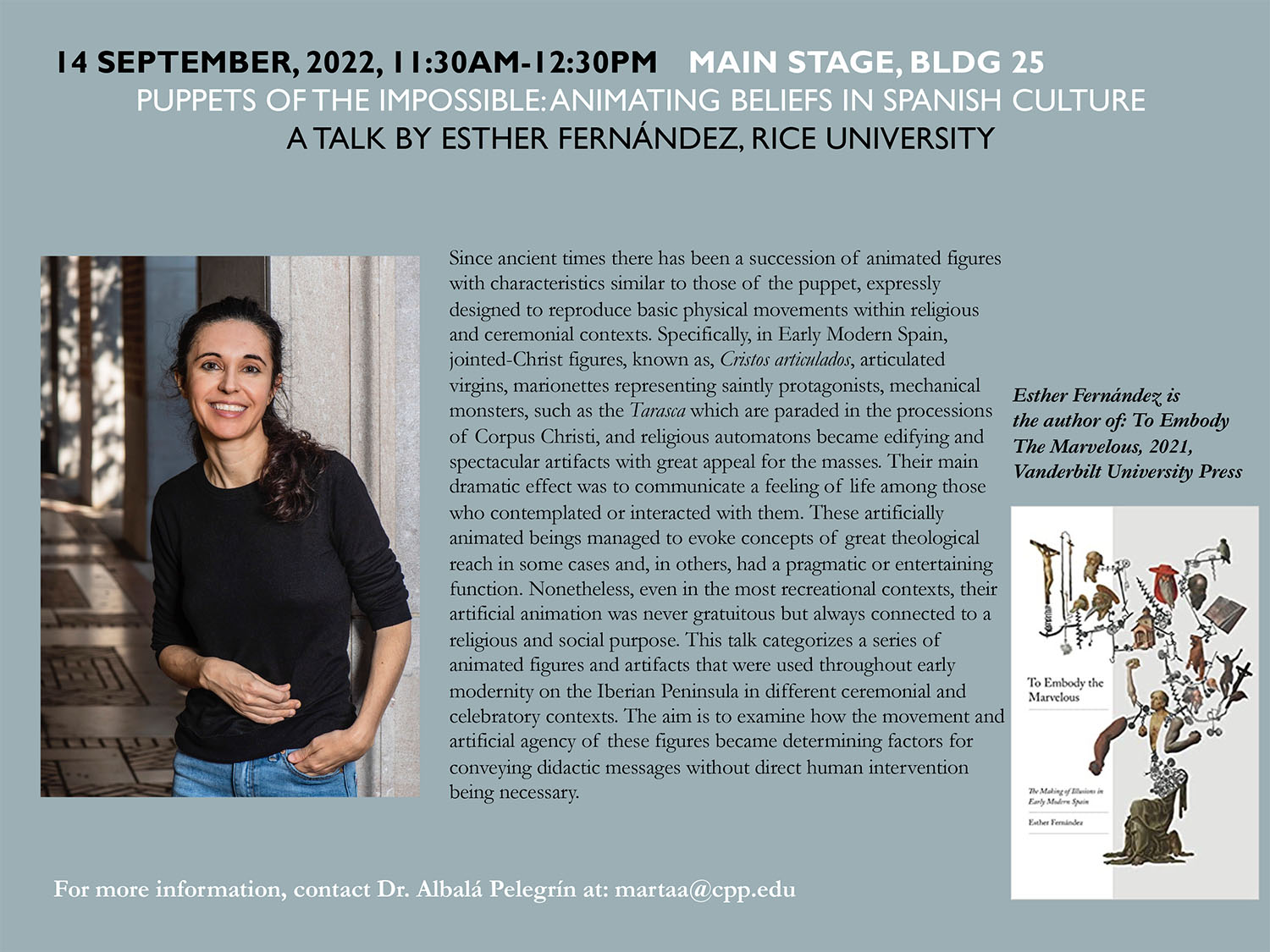"Puppets of the Impossible" with Dr. Esther Fernández
September 15, 2022
On September 14, Dr. Esther Fernández of Rice University gave a talk about historical animated figures and puppets in Early Modern Theater to students from Dr. Marta Albalá-Pelegrín's Hispanic theater class and Bernardo Solano's theater class. The event was open to other students, faculty, and the public.
Fernández's talk, “Puppets Of The Impossible: Animating Beliefs In Spanish Culture,” argued that since ancient times, there has been a succession of animated figures with characteristics similar to those of the puppet, expressly designed to reproduce basic physical movements within religious and ceremonial contexts.
Specifically, in Early Modern Spain, jointed-Christ figures, known as, Cristos articulados, articulated virgins, marionettes representing saintly protagonists, mechanical monsters, such as the Tarasca which are paraded in the processions of Corpus Christi, and religious automatons became edifying and spectacular artifacts with great appeal for the masses. Their main dramatic effect was to communicate a feeling of life among those who contemplated or interacted with them. These artificially animated beings managed to evoke concepts of great theological reach in some cases and, in others, had a pragmatic or entertaining function. Nonetheless, even in the most recreational contexts, their artificial animation was never gratuitous but always connected to a religious and social purpose.
This talk categorized a series of animated figures and artifacts that were used throughout early modernity on the Iberian Peninsula in different ceremonial and celebratory contexts. The aim was to examine how the movement and artificial agency of these figures became determining factors for conveying didactic messages without direct human intervention being necessary.
For more of Esther Fernández's work, see her 2021 book, To Embody The Marvelous, from Vanderbilt University Press.
